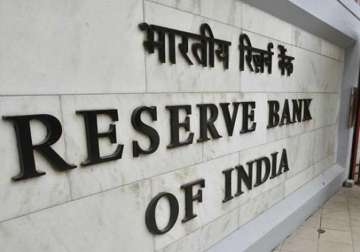Depreciating dollar, RBI investment returns hike foreign reserves
Mumbai: Depreciation in dollar value, interest payments on securities held by the apex bank in non-dollar currencies and the rich payouts for its participation in the forwards trading market led to an exponential rise in

Mumbai: Depreciation in dollar value, interest payments on securities held by the apex bank in non-dollar currencies and the rich payouts for its participation in the forwards trading market led to an exponential rise in India's foreign exchange reserves.
According to the data furnished by the Reserve Bank of India (RBI) in its weekly statistical supplement, India's total foreign exchange reserves grew by $1.74 billion to touch a new record high of $353.87 billion for the week ended May 15, 2015.
For the week ended May 8, the reserves grew by $262.4 million and stood at $352.13 billion. In the week before that (May 1) they had rocketed by $7.26 billion and reached $351.86 billion.
Foreign exchange reserves have increased by close to $25 billion since January as overseas investors buoyed by the hope of economic revival poured in dollars in the local debt and equities market.
"The reserves have grown and touched a new high. It is due to a combination of reasons like depreciation of dollar which translated into a rise in non-dollar currencies and gold value," Anindya Banerjee, senior manager for currency derivatives with Kotak Securities told IANS.
"It is also assumed that the RBI has received the interest payment on securities it holds in non-dollar currencies. The RBI is also pretty active in the forward purchase markets since the last 18-23 months and this could also have resulted in the exponential rise in the foreign reserves," Banerjee pointed out.
Another crucial factor for the rise in the reserves is the assumption that RBI has not intervened in the forward trading market by selling dollars to arrest the fall in the rupee value.
"The RBI has finally found a comfortable corridor of Rs.63-Rs.65 per dollar for rupee and it is unlikely that it intervened this week to slowdown the rupee fall. The rupee value has stablised during the last week," Banerjee elaborated.
During the last two weeks the rupee value was impacted by the significant pull-back of foreign funds due to the minimum alternate tax (MAT) issue.
Some estimates point out that the RBI may have sold nearly $5-$6 billion in the forward trading markets to arrest the slide in the rupee value which currently stood at Rs.63.43 per dollar.
The other major factor for the RBI to continue its build-up of the reserves is to counter any future financial shocks and further slide in rupee value like the one which was witnessed in 2008 and June 2013.
"Apart from dealing with any future financial shocks like the one which was earlier triggered by the US Fed's announcement of tapering, the healthy state of reserves has acted as a support to the Indian rupee's value," Banerjee added.
The RBI is cautious about the US Fed's stand that the rate hike might take place in the later part of the year.
With higher interest rates in the US, the foreign portfolio investors (FPIs) are expected to be led away from the emerging markets such as India.
Meanwhile, the foreign currency assets (FCAs) which form the largest component of the forex reserves increased by $1.70 billion and stood at $329.12 billion in the week under review.
The country's gold reserves remained stagnant at $19.33 billion. The reserves had augmented by $297.7 million during the week ended May 1.
The special drawing rights (SDRs) were up by $27.80 million to $4.09 billion.
The country's reserve position with the International Monetary Fund (IMF) grew by 9.1 million to $1.32 billion during the week under review.